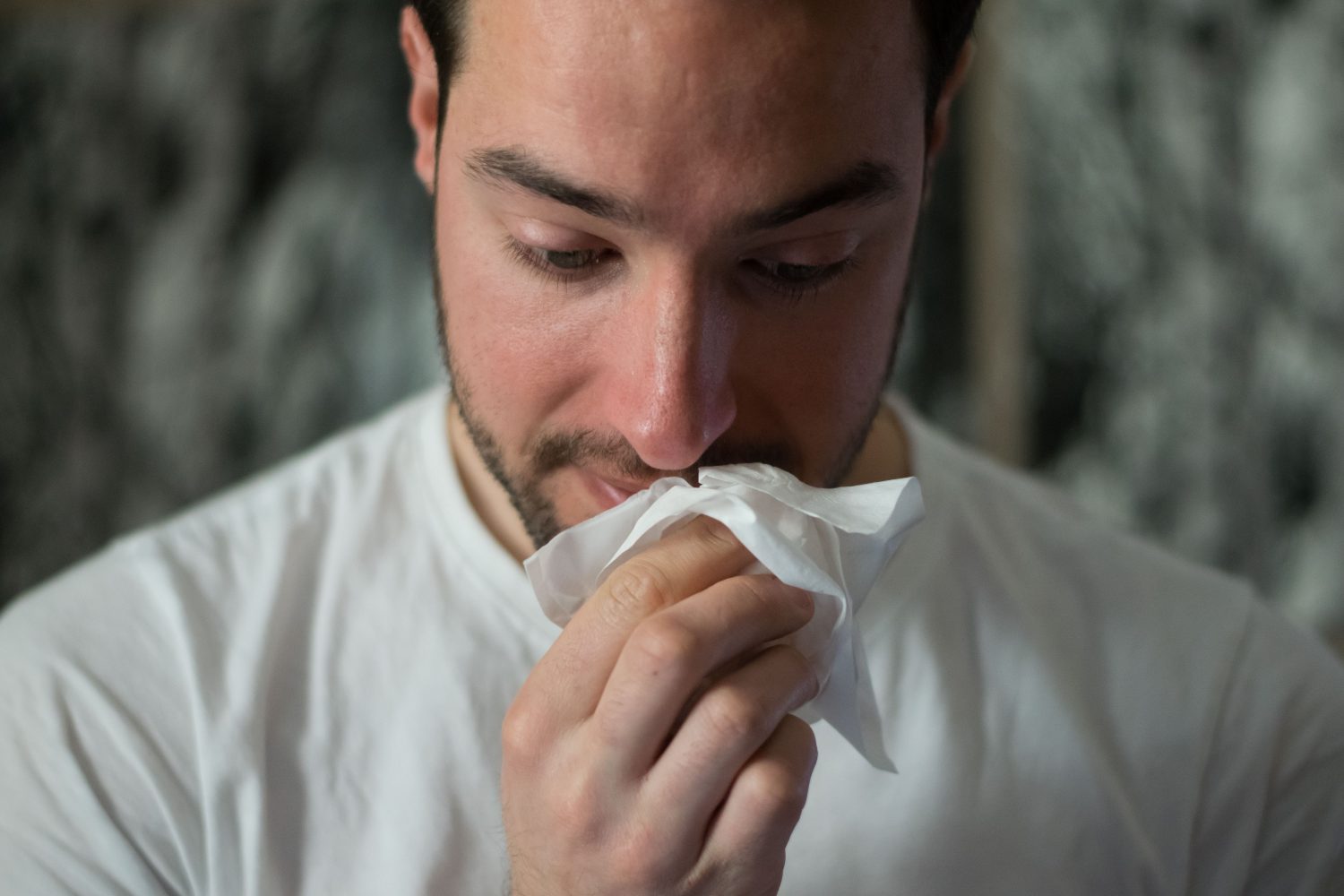Urinary Tract Infections
Firstly, let’s define the urinary tract. This essentially refers to your kidneys, bladder and associated pipes – the ureters which connect your kidneys to your bladder and your urethra which is the pipe from your bladder to outside your body allowing you to pass urine.
Urinary tract infections are just such a common problem for the elderly. In elderly people, however, urinary tract infections may not always give you a set of symptoms that can be vague. An infection of the urinary tract may cause you to be confused, lightheaded or just have a fever. You may feel nauseous and all along not actually feel like you have a urinary tract infection at all. For this reason, it’s really important to consider a urinary tract infection as being the cause of any generalised unwellness or change in how you feel, and if you’re unsure, have a doctor test a sample of your urine for infection.
Of course, you may well get symptoms more typical of a urinary tract infection. These could be:
- Burning or stinging when you pass urine
- Increased frequency of urination
- Increased odour to your urine
- Your urine may have a tinge of red to it caused by blood
- Back or lower abdominal pain
- Fever, nausea and or vomiting
Is it my bladder or kidneys?
It is important to distinguish a bladder infection from a kidney infection since the latter is more serious, in general, in nature. When you have a bladder infection, you may well have some discomfort and pain in your lower abdomen or back and trouble passing urine. You may even have a mild fever, but you are not usual SO unwell. When you have a kidney infection, by contrast, the pain in your back or flanks can be really severe and you could end up feeling very sick with fever, chills, rigours and significant nausea and vomiting. Keep in mind also that a bladder infection, if not treated, can extend and proceed to travel up to your kidneys. So it’s good to get on to.
What are the causes of a urinary tract infection?
Constipation contributes to urinary tract infections by limiting the complete emptying of your bladder when you urinate. This is discussed further below.
A large prostate can contribute to the same issue – incomplete bladder emptying. The resultant stagnation of urine increases the risk of infection.
Not drinking enough water means that your urine is just not flowing as much, and stagnation of urine in your bladder, once again, increases the risk of infection.
For elderly women, vaginal dryness leads to the outside facing aspect of the urethra more prone to allowing bacteria to enter and a bladder infection to set in.
How to treat a urinary tract infection
Urinary tract infections are best treated with antibiotics. If you do not have any penicillin allergies, cephalexin is a good place to start, usually 500mg twice a day. Or trimethoprim. If you take trimethoprim, note that you should take it in the evening for maximum effect since the drug tends to collect in your bladder overnight where it needs to act. For women, usually 7 days is enough. For men, infections tend to be more stubborn so a 14 day course is recommended. If you have a resistant or stubborn urinary tract infection, you may be prescribed a different antibiotic, for example ciprofloxacin 500mg twice a day.
Sometimes, if you are prone to getting urinary tract infections very commonly, you may be prescribed a daily low dose antibiotic, typically cephalexin 250mg once a day, to decrease the chance of getting a urinary tract infection. Otherwise, you may consider using an antiseptic agent such as hexamine hippurate (Hiprex) which is a chemical that helps to keep your urine acidic and in doing so helps to fight bacteria within the bladder. The usual dose of Hiprex is 1g oral twice a day.
For elderly women, you may consider using an oestrogen cream or pessary. This increases the bulkiness of the area surrounding the opening of the urethra, helping to reduce the likelihood of infection tracking from there.
For elderly people, it is useful to send a sample of urine for testing, to make sure that the antibiotic medication is the correct one. This is so that no time is wasted in changing treatment, if required.
Kidney or ureteric stones
Stones in your kidneys or pipes connecting the kidneys to bladder, the ureters, can cause spasms of intense pain. That pain is usual felt in your flank (lower back) on the side of the affected kidney. It can be a sharp pain. The pain of a stone in the ureter can be very intense indeed until that stone hopefully gets passed when you urinate. Sometimes however, kidney stones may not cause pain, and instead may be related to repeated bouts of urinary tract infections. When you get such recurrent infection, your doctor may order a scan of your kidneys (ultrasound or CT scan) and you come to know of your kidney stone then.
Dehydration can increase the likelihood of getting a kidney stone, so the best way to avoid the problem is by getting into a habit of drinking lots of fluids. That could be either water, tea or coffee. Just not alcohol.
Of note, it’s important to think about the possibility of having a kidney stone if you have lower back pain. Some pain killing medications should be avoided with kidney problems, namely, non steroidal anti inflammatories (NSAIDs) such as ibuprofen and diclofenac for example. These medications, if taken long term, can damage your kidney. It is sadly not uncommon then for a person with back pain to be taking these medications for relief, only after some time, to find out that the cause of their back pain all along was a kidney stone. And, that the pain medications they were taking were doing them harm. To avoid that scenario, keep in mind the possibility of a kidney stone being the cause of any back pain you could have, and if you’re not sure, talk to a doctor and raise your concern.
Urinary obstruction
This is the condition whereby your bladder fills with urine, but one reason or another, you just cannot force urine out of the bladder down the urethra to pass that urine. As a consequence, your bladder continues to fill with urine and can cause lots of pain as it stretches. You may notice that your lower abdomen is getting distended. There are different reasons why an elderly person in particular can have urinary obstruction like this. For example –
- The connection between the bladder and urethra could get kinked from constipation or a prolapse as earlier discussed.
- The bladder being a muscle, could fail to contract to squeeze the urine out. This could happen because of medications which may affect the nerves which give signals to the bladder to contract. The bladder may also not contract well in the presence of some diseases which may affect the nervous system such as multiple sclerosis.
- Sediment obstructs the outflow. Urine is usually quite free from particles and sediment. However, especially in the case of infection, when there are many cells being shed from the bladder wall, urine can hold much sediment. This collects on the floor of the bladder and ultimately blocks the outflow to the urethra. Sometimes, infection can cause bleeding within your bladder, and if there is enough blood, clots will form, again blocking flow of urine from bladder to urethra or within the urethra itself.
To treat urinary obstruction, we need to consider first and foremost the cause. If it’s constipation, clearing the bowel may just do the trick. This could be achieved with laxatives, suppositories and enemas. If infection is suspected by fever, then taking antibiotics may help. Medication, particularly diazepam can help the bladder relax and empty.
Bladder Catheters
However, if these things fail, then it may be time to consider manually passing the obstruction with a plastic or silicon tube and draining the bladder. This tube is called a catheter. This procedure needs to be done by a professional – a doctor or nurse. The procedure is more simple for female patients since the urethra is short, compared to a male, where the urethra is longer since it is present within the penis. Although anaesthetic gel is used, having a catheter inserted can still be painful.
Once a catheter is inserted, hopefully lots of urine will drain out and the elderly person will get rather immediate relief. Remember to send a sample for testing. If the urine is found to be blood tinged, it could initially be suspected that infection is the cause, and antibiotics may be started. If not much urine drains, then its not likely that bladder obstruction was the cause of the persons problem.
Usually a bladder catheter can be removed after the urine has been drained, if not soon after. However, if someone has a particular chronic disease (such as multiple sclerosis) or prone to recurrent bladder infections, then it could be suggested that a longer term catheter is used. In this case, rather than having the catheter get to the bladder via the urethra, a doctor may recommend that a small incision be made on the external surface of the skin overlying the bladder, and a tube be inserted directly into the bladder from there. This is called a “suprapubic catheter” and is used for situations where a bladder obstruction is likely to keep recurring. It is a more permanent solution to that problem.
Kidney failure
Like any part of your body really, your kidneys can wear out. Your kidneys are basically a filtering mechanism for your blood. Your blood flows through them, filter out what needs to be removed – waste products, and keep in your blood what is useful and therefore should remain. Added to this, they help to regular the various concentrations of chemicals such as sodium within your blood. If your kidneys start to lose their function, then your blood can accumulate more wastes, and you can lose more value parts of your blood, such as protein in your urine. As your kidney function goes down, the amount of urine they produce also diminishes, ultimately meaning that your body is prone to collect fluid. During this phase, your legs may swell much like heart failure, which we discussed earlier.
To check the status of your kidneys your doctor may order blood tests and ask for a sample of your urine. That sample of your urine will be checked for protein. If you have excess protein in your urine, that may be a much earlier sign of a kidney problem despite normal blood tests. So it’s very helpful to test your urine this way.
To take the stress of your kidneys, as an elderly person it’s important to drink plenty of fluids (tea and coffee is also helpful) and not eat too much salt. It’s also important to monitor your blood sugars and if you have diabetes, control that blood sugar. Likewise, blood pressure needs to be controlled since high blood pressure adds further stress to the kidneys.
TIPS:
- Drink plenty of water. Your kidneys have to work less hard when your body is well hydrated, so in general, your kidney health is improved by drinking more water.
- Eat less salt. Salt raises your blood pressure and high blood pressure can cause your kidneys to wear out more quickly. Increased salt in your diet also makes your kidneys work more, once again contributing to their deterioration over time.
- Don’t let yourself become constipated. Since your rectum (large bowel) is located just behind your bladder, when you are constipated, the pipe which allows urine to flow out of your bladder, your urethra can get kinked. This can lead to your bladder not completely emptying when you urinate. This stagnation of urine can increase the risk of you getting a bladder infection.
- Be careful with hygiene if you have diarrhoea. It’s very common for a female person to get a bladder infection after having a bout of diarrhoea. So, its really important to take extra care during this time. If you are double incontinence, this can be tricky. However, try your best to have your incontinence pad changed more regularly to avoid this happening.
- Consider having your urine tested after you finish your course of antibiotics. This may not always be necessary. However, if you are having frequent urinary tract infections, or your present one is stubborn to treat, it is useful to test your urine after your course of antibiotics. This will reveal whether the antibiotics have worked and if you get a subsequent infection, you know that it is in fact a new infection, rather than a matter of the previous episode not fully clearing.
- Remember – a urinary tract infection can cause you to get really very unwell if left untreated. This is because the bacteria can enter your blood stream and infect your whole body. I have witnessed many patients end up in hospital with whole body infections (sepsis) from a simple urinary tract infection. Get treated. In particular, If you suspect you have a kidney infection, you really should talk to a doctor.
- Avoid catheters or at least take them out as soon as possible. If you really go into urinary obstruction and need a catheter, then have it done. It will fix the problem. However, make sure you take it out as soon as possible. This is because, usually, the longer you leave it in, the more likely it is that you will have some residual dysfunction of your ability to pass urine after that. Of course, look at the reasons why you may have had to have it inserted in the first place, which led to obstruction (constipation, infection etc) and avoid or treat those. However, try to take the catheter out as soon as possible. Going further, although a suprapubic catheter may appear to be a simpler, cleaner solution to recurrent bladder obstruction, you should really think hard before saying yes. Suprapubic catheters can have many issues of their own including infection and recurrent blockages. So it’s not a perfect solution, and once in, it’s rare that a suprapubic catheter gets removed.





